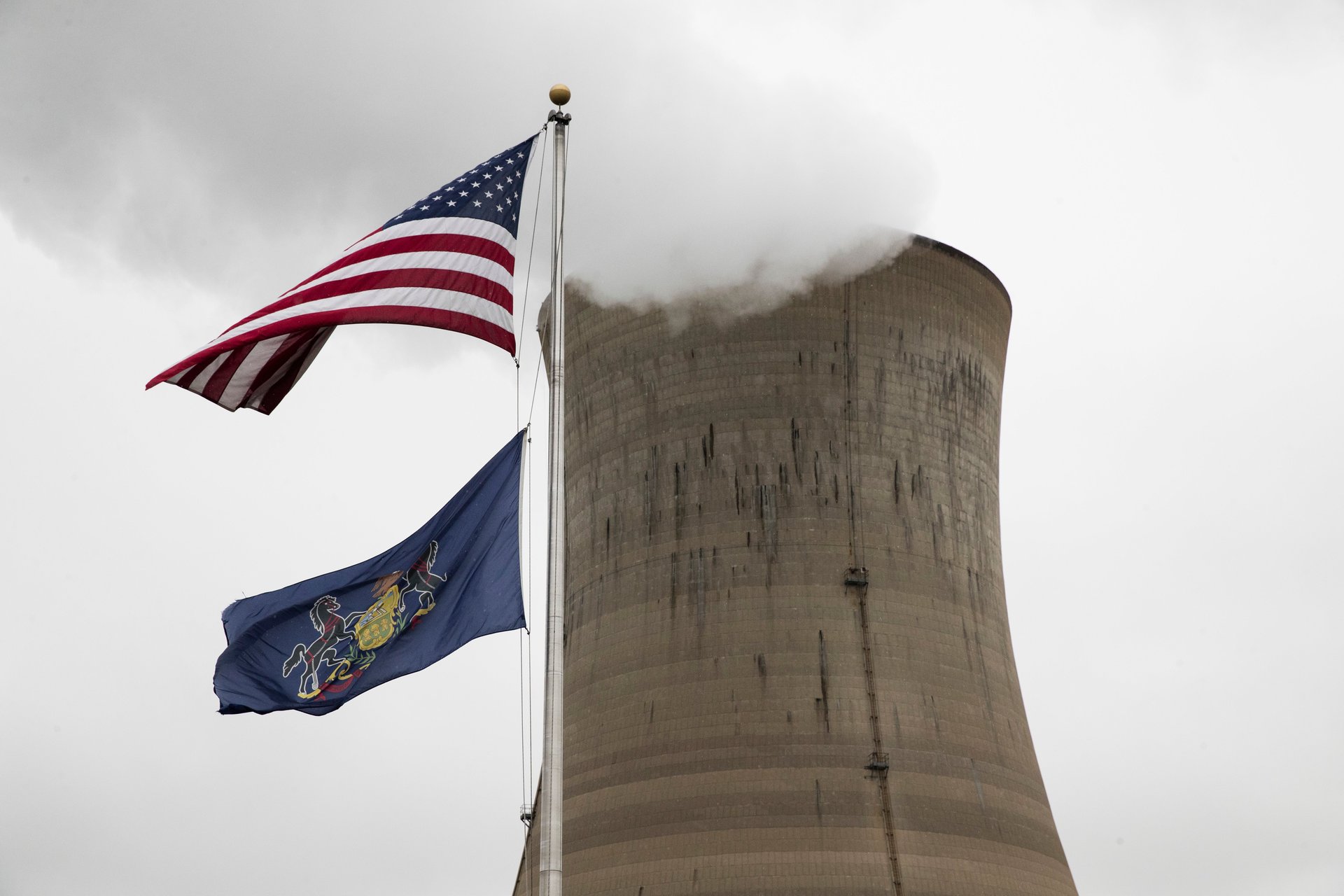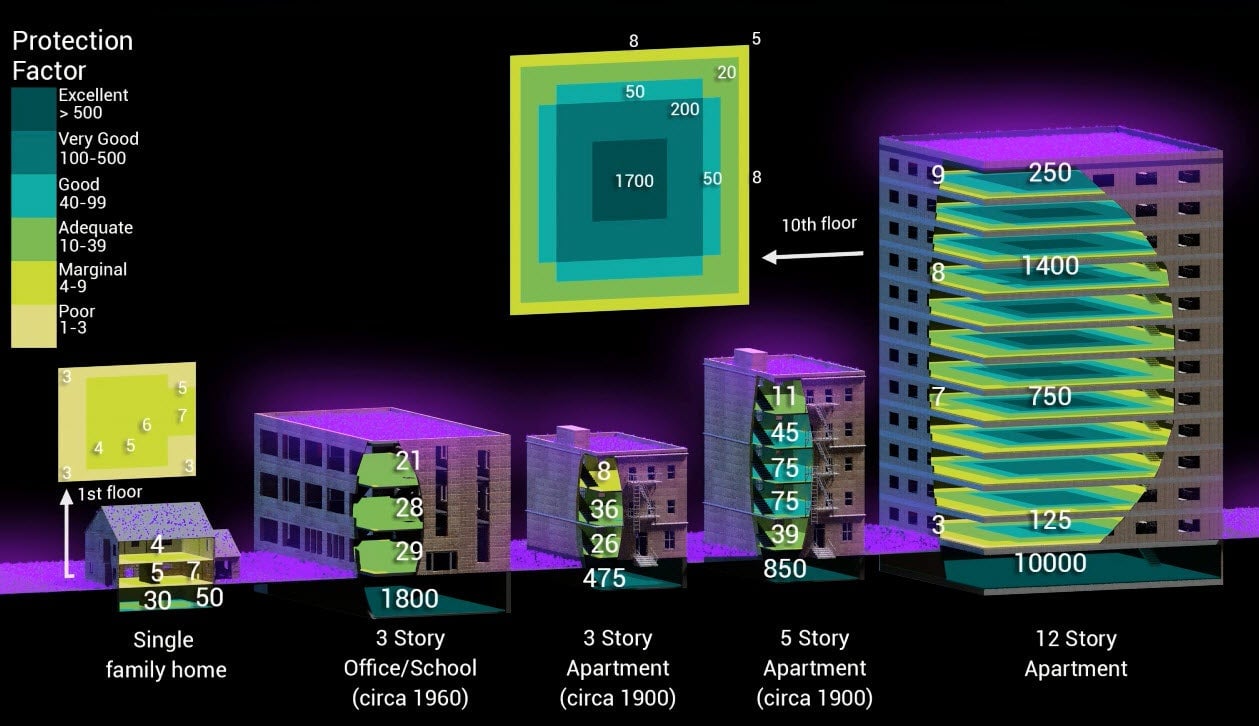New York’s plan for nuclear fallout is basically “duck and cover”
In April, a rumor spread that 600,000 people were evacuated from Pyongyang, the capital of North Korea, because they wouldn’t all be able to fit in the city’s network of bomb shelters in case of an attack. That report was later debunked, but rising tensions between North Korea and the US have a lot of people on edge. North Korea’s series of recent missile tests are unlikely to help matters.


In April, a rumor spread that 600,000 people were evacuated from Pyongyang, the capital of North Korea, because they wouldn’t all be able to fit in the city’s network of bomb shelters in case of an attack. That report was later debunked, but rising tensions between North Korea and the US have a lot of people on edge. North Korea’s series of recent missile tests are unlikely to help matters.
The latest ballistic missile fired by North Korea is believed to have fallen in the ocean, within Japan’s exclusive economic zone. Relatedly, in March, Japan ran its first evacuation drill designed for the possibility of a North Korean missile attack. With these reminders of some kind of nuclear threats, and the doomsday clock the closest to midnight it’s been in decades, it seems fair to wonder how safe would American cities be, in such scenario?
We looked at New York—because it’s the most densely populated, and it is, after all, the only city in America to ever have suffered an aerial attack (not counting Pearl Harbor in 1941). Sure, climate change will probably kill New Yorkers before a nuclear explosion does. But still, should the city follow Hawaii’s (or Japan’s) lead in updating fallout shelters?
There isn’t much of a plan
It’s important, first of all, to talk about where nuclear fallout is most likely to come from. While American children growing up during the Cold War were warned they could be attacked at any minute by a foreign bomb or ballistic missile, this is not a risk, at least for the time being. Despite North Korea’s propaganda, America’s mainland—and, likely, even Hawaii—is still far away from the reach of a nuclear missile.
That said, New Yorkers could face nuclear exposure from two other sources: A terror attack utilizing a low-yield radioactive device, or a radiation leak following an accident in one of the plants somewhere near the city. (Just as an example, on May 9, a tunnel collapsed in a plutonium finishing plant in Hanford, Washington. According to news reports, it was full of highly contaminated nuclear waste. Though luckily no one was harmed, workers were instructed to take cover, ensure the ventilation was working in buildings, and “refrain from eating and drinking.”)
The latter scenario is the least dangerous, for a number of reasons. Brooke Buddemeier, a certified health physicist (also known as a radiation safety specialist) at the Lawrence Livermore National Laboratory, tells Quartz that due to the workings of nuclear plants, accidental explosions within the plants are not actually nuclear and are very small in comparison to a nuclear bomb explosion. In the unlikely event of an accident, most of the radioactive material would be contained by the reactor containment itself, limiting the damage to structures and people in the immediate vicinity of the plant. Further, any radioactive plant leak would likely take some time and release radioactive material at much slower rates than an explosion, allowing for an evacuation of the area to prevent or reduce exposures to the public.
A bomb is different. If an improvised nuclear device were to go off in New York City, Buddemeier said, we’d be “looking at a low-yield explosive going off at ground level.” The explosive power of such a device could be of a magnitude comparable to the bombs of Hiroshima and Nagasaki, and the dangers would be twofold: The immediate explosion, and the radioactive fallout.
When it comes to the explosion, the danger (at least in terms of dying from the explosion itself, or developing acute radiation sickness) would decline drastically after the first half mile, remaining serious for anyone standing within the first mile of the blast, then somewhat concerning for those within three miles of the explosion.
The fallout—or the radioactive debris that would fall from the sky following an explosion—would cover an area between 10 to 20 miles, with the so-called “hot zone” covering up to 100 miles.
Gone are the days when New York’s “busy millions” were involved in city-wide drills: The city’s Emergency Management department said today it’s much safer to simple find the closest building and stay indoors rather than looking for a designated fallout shelter.
On the site PlanNowNYC, New York maintains lists of possible disasters—including biological attacks, dirty bombs, and cyber attacks—and gives advice on how to handle them. For a radioactive attack, the official government suggestion is again to stay indoors, remove possibly contaminated clothes, take a warm shower, and don’t use conditioner (it can bind radioactive particles to your hair protein).
In case of any kind of radioactive attack, “New Yorkers should immediately take shelter in the center or basement of any nearby building. Expect to stay there until instructed to leave by emergency personnel,” a New York City spokesperson wrote to Quartz in an email.
But is that enough of a plan? And how many people can actually fit in basements and building halls, anyway?
Stay inside, and wait
“An east coast city like New York offers some good protection,” says Buddemeier. “[The key] is getting into the nearest solid structure and staying indoors.” Examples of structures that provide good protection are basements, multistory buildings, and underground areas including parking garages or subways.
The degree of protection offered by a building depends on its size, the material it’s built with, and where one stands in it. Basements (particularly corners) are generally the best bets, or the center of a tall concrete building. Taking shelter in the center of a tall concrete building would cut the potential radiation exposure from a dirty bomb down by a factor of 1,000 to 10,000, according to calculations from the Lawrence Livermore National Laboratory. But even sheltering in a one story wooden house would cut radiation exposure down by a factor of 10.

People who are outside at the time of the explosion should seek the nearest, most effective shelter—but getting indoors sooner is more important than finding the perfect protection. Similarly, those who are indoors should just stay there, and wait: Even a few hours will significantly reduce the radiation intensity.
“Radiation is one of the gifts that keeps on giving,” explains Buddemeier. But while some level of radiation could be detectable in the area of an explosion for years to come, its intensity would be drastically reduced after the first day. Within the first hour, radiation is cut in half, and loses 80% of its power after the first day, so protecting oneself during this initial period of time should hopefully reduce the risk of acute radiation sickness.
Reducing exposure as soon and as drastically as possible, Buddemeier says, will also help stave off the long-term effects of radiation, such as cancer or genetic mutations. Drinking water and eating food is OK, he says, and though “you don’t want to go out and start harvesting fresh vegetables.” Food that is stored indoors can be consumed and ”if you need to wash off or are thirsty, by all means, get water.” While bottled is preferable, even the water in the city system would do in a pinch.
Importantly, these safety and emergency measures actually apply to a nuclear explosion of any kind—even a much more powerful one: The difference of course would be the size of the prompt impact zone, and how far downwind people would need to find shelter in order to avoid significant fallout exposure